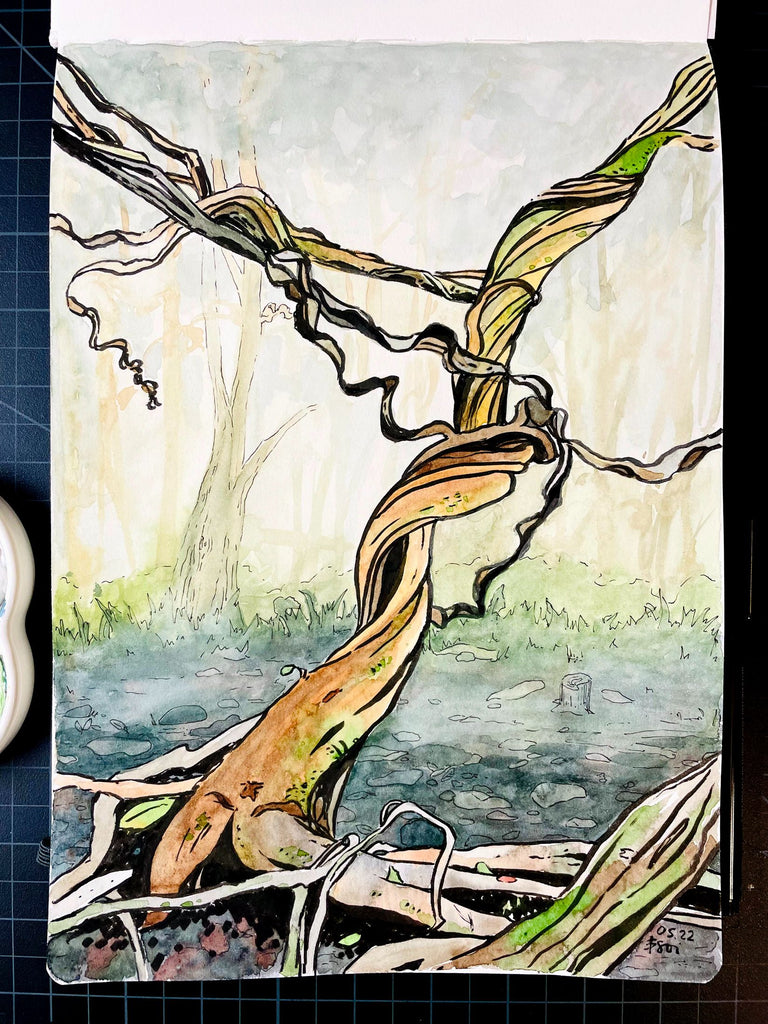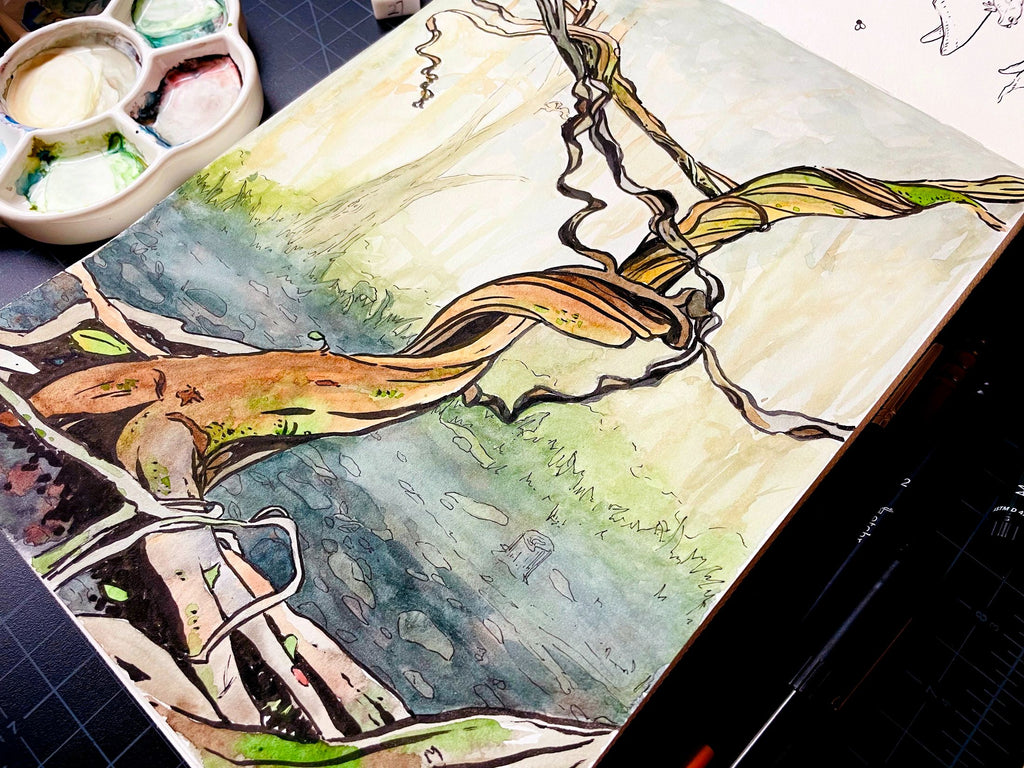If you’re an artist who likes to pair ink drawing with watercolour painting, then I’m sure you know the age-old conundrum: Should you ink first, or paint first? In this blog, we’ll take a look at the similarities and differences, and the pros and cons of both methods.
Inking First

Since watercolour is a transparent medium, this makes it very suitable for using over an ink drawing, as the darker ink layer will easily show through the paint.
Of course, you’ll need to use waterproof ink to prevent the ink from bleeding, but otherwise, it’s pretty easy to do! There’s also an automatic guideline of where the paint should go, and allows for very accurate painting, as you can simply paint within the inked lines.

I will say though, that painting over your lines might cause the ink to have a sort of “faded” look, especially if your paints are labelled as “semi-opaque” or “opaque”. Painting a very saturated layer may also make the ink look less dark.
Some people don’t mind this, as this can be easily adjusted using photo-editing software, but if you’re the type who wants to keep their lines pure black (or whatever the original ink colour is), then this method might not be for you

In the close-up image above, you can see where the black lines have faded. They’re not as noticeable from further away, but certain areas (especially where there are thicker lines) will look a little patchy up close.
Tip: Of course, for the best of both worlds, you can always ink, paint, and then ink over the same lines again, but it will take up more time than you may want to spend. Your lines may also not be perfectly aligned unless that’s the look you want to go for.
Painting First

How about painting first? The great thing about it is it feels more freeing, as you can lay your paints and allow them to flow more freely as you’re not pressured to paint within the borders.
You can also get some interesting bleeds if you’re using wet techniques, which also lead to a softer, blurrier feeling. Of course, if you’re not comfortable with painting freehand, then this might be more of a downside, as the ink lines may offer a greater sense of security.

One cool thing you can do with inking afterwards is you can highlight your best bleeds by drawing around them. For example, in my painting, I had some darker and some lighter patches, so I drew around them to turn them into rocks and leaves on the ground.

Some watercolourists take this to the extreme, but that all hinges on being able to intentionally create great bleeds and/or backwashes in the first place! But in any case, your inked lines will be crispier and darker, since they don’t have a layer of paint over them.
Bonus tip: You should wait for your paint to dry completely before inking on top!
One downside may be that it’s much more difficult to “plan out” your painting and drawing with a lot of accuracies beforehand unless you’ve practised before or use a pencil with water-soluble lead to sketch out your lines. It’s not for the faint of heart!
Conclusion

So should you ink first, or paint first? I guess it all depends on whether you prefer a tidier style with the paint staying within the lines, or whether you like a messier, more daring style. To be honest, the not-as-dark ink from painting over your lines is almost negligible, and you can always plan a sketch using watercolour paint if you don’t have a water-soluble pencil.
It also depends on what you’re used to, although it’s good to try out different methods to practice and to expand your skill repertoire! So with that being said, you’re more than welcome to attempt both methods and see which one you like more. And feel free to share your findings with us!
Do you ink first or paint first? Or does it depend on your painting subject? Let us know in the comments below!
Also, if you’d like to learn more about the artistic process or our products and resources, feel free to subscribe to our email newsletter. There’s something for everyone!



10 comments
Hey Alfred – I’m so glad to hear this post was helpful! If you ever post the art you’ll make, please tag us @etchr_lab :D We’d love to see!!!
- Ânia, from Etchr
This is the exact information I’ve been looking for! I’ve been mostly sketching and inking, but I’ve been wanting to add some color with watercolors and this gave a great insight into the approach when paired with ink.
Paul – so glad this was helpful! Changing how we do things can be intimidating at first, but the results will be so different! It’s certainly a fun exercise, at least :D
Laura – Can’t wait to see what you’ll make if you give this a go!!
- Ânia from Etchr
Thanks for the insights.
Very interesting, I’ve just got back into art and fancy urban sketching. It seems you can be much looser if painting first. I have been inking first but will take the Bull by the horns and try painting first. Thanks for sharing this. 👍